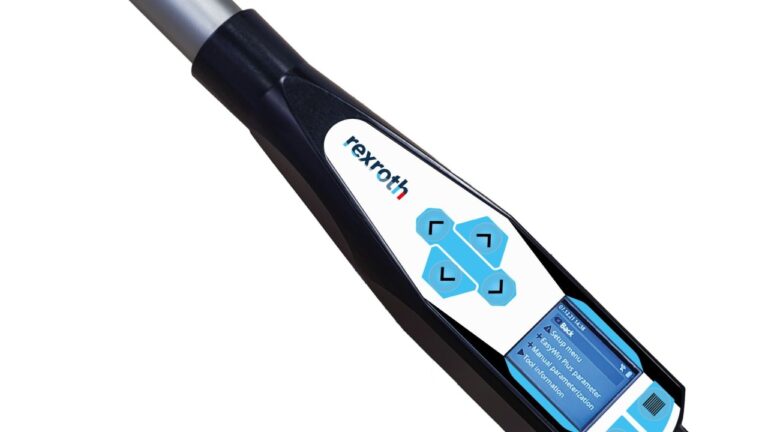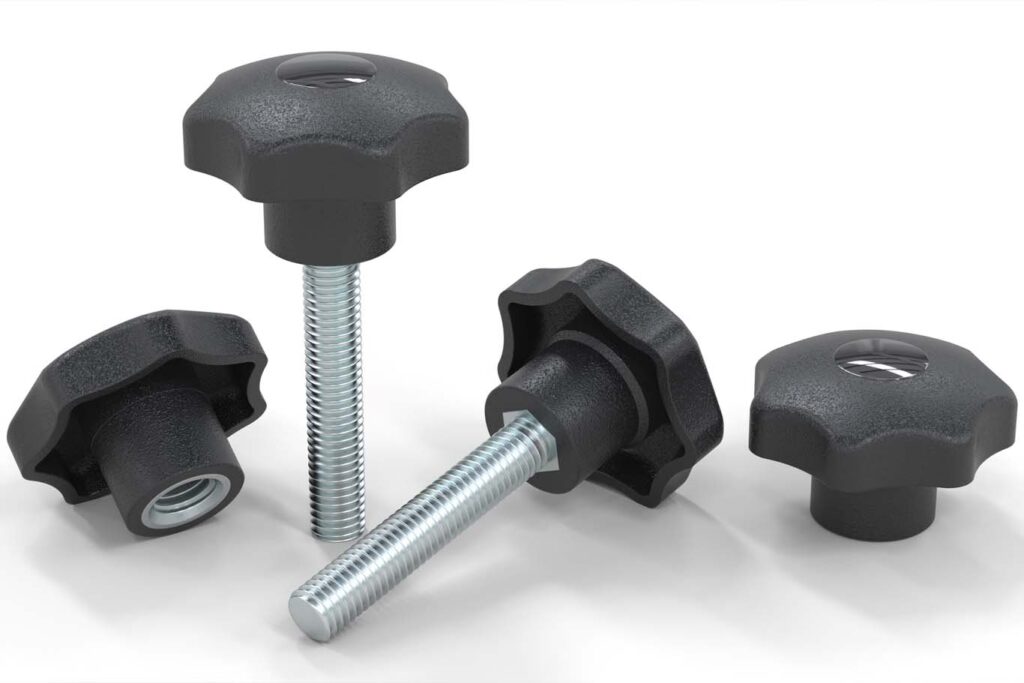 “The global industrial fasteners market is on a positive growth trajectory, driven by key sectors like manufacturing, construction, and automotive.” This is according to a new report from ResearchAndMarkets.com.
“The global industrial fasteners market is on a positive growth trajectory, driven by key sectors like manufacturing, construction, and automotive.” This is according to a new report from ResearchAndMarkets.com.
In fact, the global fasteners market is expected to hit $124.9 billion by 2030. And good news, this growth trend begins in 2024.
Although supply chains are always at risk of some disruptions related to the economy, logistics, and market conditions (and yes, also global pandemics), resilient businesses have undoubtedly strengthened their relationships and distribution networks. Most have also gone digital, automating manufacturing, supply, and demand as required for better efficiency and long-term cost savings.
The last year brought some interesting innovations. The latest developments in fastening have focused on efficiency and sustainability (see below). We encourage you to browse through Fastener Engineering for more finds.

AllFlex stainless steel thread cutting and self-tapping fasteners are ‘Made in the USA,’ and have a proven success record in architectural applications.
We look forward to finding out what’s in store for 2024. Happy New Year!
1. Fasteners that prevent galvanic corrosion
Stainless steel offers long-term corrosion resistance in harsh environments, such as coastal areas and places where moisture accumulates. However, stainless steel is not always effective when fastened to certain dissimilar types of metal — often resulting in galvanic corrosion.
To prevent this, Alloy Fasteners has engineered AllFlex fasteners. What makes these fasteners reliable is an innovative Stalgard GB (Galvanic Barrier) finish, which provides greater galvanic protection for aluminum components than standard (300 series) stainless steel fasteners.
The result is fasteners that ensure long-term corrosion resistance in aggressive environments, retaining joint and material integrity for long-term strength and durability.
2. A new standard of rivet nut strength
Meet Optisert, a round-body rivet nut that offers superior strength, performance, and spin-out compared to the typical standard round-body rivet nuts. This is according to Sherex Fastening Solutions, a manufacturer of engineered fastening solutions, including the innovative Optisert rivet nut.
What’s unique about Optisert is the combination of an engineered knurled body and under-head wedge design. This gives the rivet nut an excellent grip, preventing it from spinning in the base material. Its strength is nearly as great as using a hexagonal body rivet nut.
The patent-pending closed-end design provides a sealed option that does not compromise the biting effect of the wedges, delivering superior performance to other round-body, closed-end rivet nuts in the market.
3. PSAs that remove CO2 from the atmosphere
Nvirovate Materials offers the only pressure-sensitive adhesive (PSA) portfolio that reduces global greenhouse gases, helping businesses achieve carbon neutrality. The company’s products are made from soy oil, making them far less costly than petroleum-based adhesives and ensuring an emission-free solution.
What’s more: Nvirovate’s PSAs use no solvents or water. They’re comprised of over 93% organic materials and are fully compostable. They’re processed using UV light on existing equipment and remain stable for at least one year. The adhesives are ideal for labeling, protective films, packaging, and consumer markets.

The HIT-FP 700 R is the first fire-resistant adhesive anchor of its kind that adds more efficiency and increased structural safety.
4. A fire-resistance anchor
The industry’s first fire-resistant injectable adhesive anchor for rebar connections is now available. It’s a post-installed solution for concrete-to-concrete connections to help support engineers and contractors build safer fire-rated structures.
Hilti’s HIT-FP 700 R is a fire-resisting cementitious adhesive anchor with bond strength performance that compares to cast-in rebar, even at temperatures up to 500° C. Similar to cast-in anchors, this solution is easier to install, does not compromise building integrity under high temperatures, helps ensure code compliance, and supports rebar design for most fire-rated structural connections.
It also provides the possibility of an efficient and code-compliant solution for most fire-rated structural connections.
5. A pre-assembled captive fastening system
KEBAFIXX is a pre-assembled captive fastening system for ease of assembly and greater efficiency. It’s uniquely designed so the screw is fully enclosed within the sleeve-fitting mounting component. This prevents the tilting of the screw during assembly.

The benefit of a captive system like KEBAFIXX is that it includes fewer part types and reduced assembly costs.
Available from global supplier Keba Fastenings, KEBAFIXX compensates for production-related hole displacement and deformation, with tolerances of up to 2mm, depending on the type. (Compensation of up to 3.5mm is possible with oblong-shaped sleeves.) This fastener also eliminates clearances for the feeding of the fastening elements, making it possible to engineer complex designs that are more compact and cost-effective.
6. An IIoT-ready resistance weld monitor
It’s now possible to enhance resistance weld monitoring capabilities, thanks to the IIoT-ready WM-200A Networked Resistance Weld Monitor from AMADA WELD TECH.
This high-speed networked resistance weld monitor closely monitors the welding process, capturing, storing, and sending critical weld data to a remote central server via the Internet of Things (IoT). The WM-200A also provides immediate feedback to the weld station by monitoring key aspects of the process and instantaneously sending “good” or “no good” information to the process controller during production.
High-resolution data capture is critical for artificial intelligence and machine learning algorithms during R&D and production environments. The data can be stored on an on-premise or cloud-based server and viewed or downloaded from a remote location using the remote graphic user interface.

The WM-200A monitors all aspects of the resistance welding process, providing vital visual and statistical feedback during R&D and production environments.
7. Knobs that are 100% recyclable
Global supplier, WDS Components, is offering a new line of knobs that are made from a sustainable, biological source — and they’re 100% recyclable. They’re an environmentally friendly substitute for standard polymer designs and can be used across virtually all of the same applications. This means they’re suitable for indoor or outdoor use, including industrial equipment and machinery.
The new hand knobs are created to the DIN6336 star knob design, comprised of a black biopolymer knob grip with a zinc-plated steel shaft. The range is available in thread diameters ranging from M5 to M12, with male and female designs. WDS expects to release further standard parts and components constructed from an environmentally friendly biopolymer.
8. A bolting alternative
For years, welding was seen as the only way to ensure the integrity of joints in demanding load-bearing or high-vibration structures. Today, there are options. One alternative to welding is direct-tension installed, swaged lockbolts — such as Howmet Fastening Systems‘ HuckBolts.
A HuckBolt is a two-piece fastener that consists of a hardened metal pin and a metal collar that swages into the grooves of the pin, forming a specific, measured clamp force to hold assembled parts together. The fasteners are installed using a direct tension technique, in which the pin is pulled, and the collar is simultaneously swaged into the locking grooves of the pin. This deforms the collar into the grooves. The result is a consistent clamp for a strong, stable, and vibration-resistant joint.
9. An intelligent torque wrench
Torque wrench tools have gone digital, meaning installing fasteners has never been easier or more accurate. The OPEXplus digital torque wrench sets new standards for accuracy, ensuring fatigue-free work, thanks to its ergonomic design and embedded WiFi module.

With OPEXplus, the torque and the angle of rotation can be measured to ensure the correct tightening during assembly.
When a tool in an assembly line is changed, the module can simply be plugged into the new screwdriver without manual recalibration. The supplied software allows parameterization via a hotspot, the customer’s network, or a serial interface.
Developed by Bosch Rexroth, The intelligent OPEXplus transmits the tightening results with a tightening curve and the maximum torque and angle of rotation directly to any of the user’s IT systems without additional control.
10. Latches that repel dirt and stay clean
Spend less time and costs on cleaning with the latest standard parts from JW Winco. The Hygienic Design (HD) latches repel dirt and support the machine and system cleaning concept known as clean-in-place or CIP. These features translate into increased reliability for production systems and lower operating costs.

The Hygienic Design GN 1150 cam latches are made of stainless steel with special FDA-compliant seals that keep out debris.
GN 1150 are cam latches made of stainless steel with special FDA-compliant seals of EPDM and TPU. The HD latches have no dead spaces for dirt to collect because of these seals. Additional drive types are currently in development.
Filed Under: Fastener Engineering • Fasteners, Fastener adhesives, Fastener Engineering • Latches, Fastener Engineering • Nuts, bolts, rivets, Fastener Engineering • Fasteners and welding, Fastener Engineering • Knobs, FASTENING • JOINING • locks • latches • pins






Tell Us What You Think!